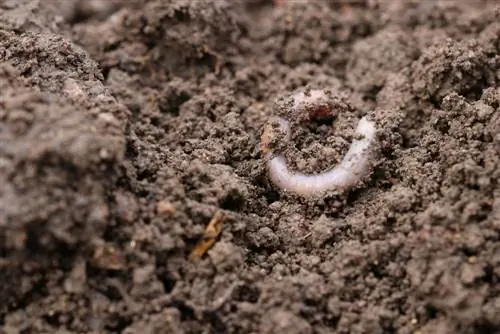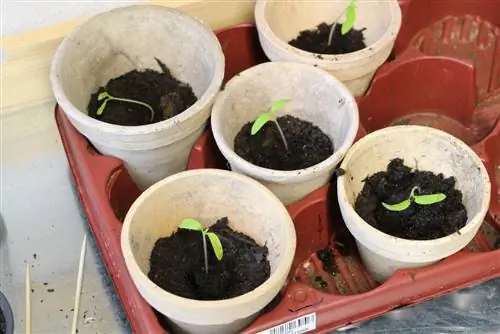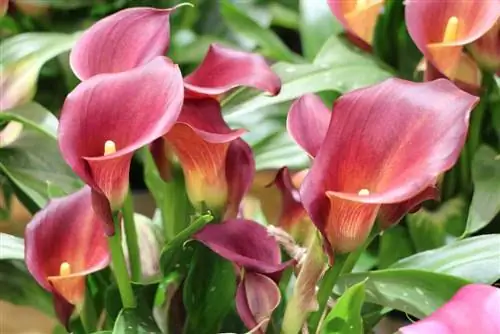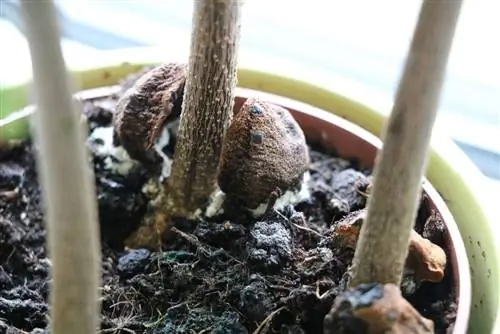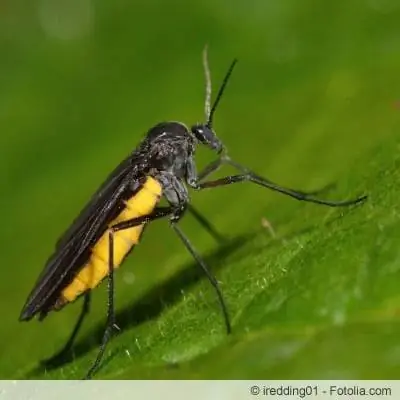- Author admin [email protected].
- Public 2023-12-17 03:39.
- Last modified 2025-01-24 12:45.
In order for plants to thrive as best as possible, in addition to light, warmth and water, they also need high-quality soil that supplies them with all the important nutrients and provides the necessary support. However, the question arises as to whether it has to be expensive potting soil or whether simple potting soil is more than sufficient.
The term “potting soil” implies that it is a special potting soil or plant soil whose composition has been specifically optimized for flowers. However, it is a misconception that potting soil is only suitable for flowers. It is also wrong to believe that flowers will necessarily grow better in potting soil than in conventional potting soil. Contrary to popular belief, there are no binding guidelines regarding the composition of certain types of soil, so in the end it is entirely up to the discretion of the manufacturers whether they declare their soil as potting soil or simply as planting soil.
What should you pay attention to when buying soil?
It may be of some help to pay attention to the product name when buying soil. However, due to the aforementioned lack of binding guidelines, it is more advisable to focus solely on the actual composition of the earth. In addition, the pH value and the exact nutrient content, which should be tailored as best as possible to the nutrient requirements of the plants in question, deserve attention. In this context, it must be noted that the pH value has a direct effect on the nutrient absorption of the plants and is therefore even more important than the actual nutrient content. It should also be noted that a moderate pH of 6 to 7 is ideal for most plants, but for a few exceptions it may be too high. For example, rhododendrons, which thrive much better in slightly acidic soil with a relatively low pH value. It should also be mentioned that nutrient-poor soil with as little s alt content as possible should be used for cultivation, as this stimulates root formation. In addition, the consistency of the potting soil is important. For example, soil that is very loose but still as structurally stable as possible is recommended for potted plants. In addition, potted soil should be able to store moisture particularly well and be inherently nutrient-rich.
What about special earth?
High-quality special soil that has been optimized for specific plants offers potential advantages compared to conventional potting soil. For example, the plants need to be fertilized less often. The disadvantage is that the specialized soil can be completely unsuitable for other plants. It is also usually much more expensive than conventional potting soil.
Tip:
Instead of buying countless types of special soil, you can simply buy a well-mixed universal soil, which is then enriched with fertilizer according to the nutrient requirements of the respective plants.
Stay away from cheap “no-name soil”
Even if it doesn't necessarily have to be the most expensive of the expensive when it comes to plant soil, experts advise against cheap plant soil. As independent studies have shown, most cheap products not only have a suboptimal mixing ratio, but are also often so s alty that they negatively affect plant growth or promote the development of diseases. In some samples, pests, branches and waste or even toxins and mold spores were found, which pose a significant he alth risk. In addition, poor-quality potting soil tends to form mud when watered, which leads to complete hardening or silting up when it dries.
Environmentalists denounce soil containing peat
Even though peat is a completely natural and therefore biodegradable raw material that has a positive effect on plant growth on several levels, environmentalists expressly advise against potting soil containing peat. The reason for this is, on the one hand, that entire moors have to be drained to extract peat, which means that the invaluable ecosystems that serve as a habitat for countless animals and plants are destroyed forever. On the other hand, draining the moors leads to an increased release of climate-damaging carbon dioxide. Apart from that, according to experts, the natural peat reserves will be completely exhausted in just under ten years, which is why environmentally friendly and sustainable alternatives have been desperately looking for for some time now.
Alternatives to peat
There are currently two extremely interesting alternatives to peat, which are already increasingly being found in stores. The first alternative is potting soil or potting soil with coconut fibers, which can store significantly more water compared to peat. In addition, coconut fiber is a rapidly renewable raw material that, when dried, takes up little space and is therefore particularly easy to transport, which makes even longer transport routes into perspective. Apart from that, the dried coconut substrate proves to be extremely user-friendly.
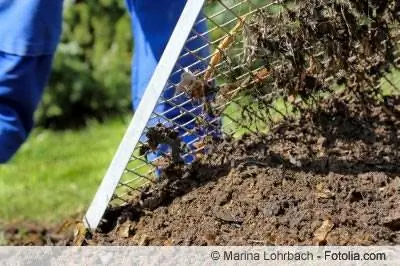
The second alternative is a by-product of charcoal production called xylitol, which has so far simply been burned in coal-fired power plants, even though it provides far less energy than lignite. Fortunately, the positive influence that xylitol has as an ingredient in potting soil on the growth, flowering power and he alth of plants has now been discovered. For example, xylitol has an unusually high pore volume, which ensures excellent aeration of the potting soil. Despite its excellent air permeability, xylitol still proves to be extremely structurally stable. In addition, xylitol has a similarly high humic acid content as peat, thanks to which the pH value of the potting soil remains at a he althy level. In addition, xylitol is almost free of any pollutants and s alts that could put too much strain on the plants. In addition, xylitol remains largely weed-free. Furthermore, it has a positive effect on the soil climate. Apart from that, xylitol production does not pose any additional burden on the environment.
Frequently asked questions
Isn't compost just as good as potting soil?
As a related experiment at the University of Budapest showed, pure compost soil is not an adequate replacement for high-quality potting or potting soil. Nevertheless, depending on the project, it is recommended to enrich conventional potting soil with well-ripened compost in a mixing ratio of 2:1.
Can you avoid fertilizer with potting soil?
Even if potting soil is usually already enriched with fertilizer and has a relatively high nutrient content, it may still need to be fertilized.
How often should the soil be replaced?
It is generally recommended that the soil of potted plants be completely replaced with fresh potting soil once a year, or at least every two years, just to protect against plant diseases and pests.

